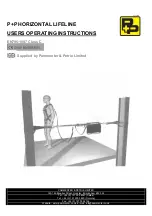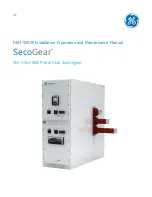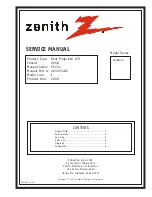
When this stage is reached, tensioning can
now begin. This is done by ‘plumping’ the
ratchet handle as shown (Fig. D).
NOTE:
On pre-2004 models there is no
indication of how much tension is in the
system. P+P recommend that only one hand
is necessary without over exerting. Using both
hands and over exerting, or using a lever is not
necessary and at a height can be dangerous.
2004 models feature a Tension Force Indicator
on the fixed bar of the ratchet. Tension as
above, until it has closed beyond the 250dN
mark.
4.
Ensure that at least 1½ complete
revolutions of the spreader bar have taken
place (Fig. D). At the same time do not
overload the spreader bars with webbing, if this
happens, the webbing will jam. Should this
happen it will be necessary to release the
webbing and start the tensioning operation
again (see releasing operation).
5. When tensioning is complete, position the
ratchet in the locked position (Fig. E).
6. Finally pack away surplus webbing into the
bag and buckle up.
Releasing the Tension and Removal
7. Releasing the ratchet handle will allow you
to open up the ratchet. Allowing the ratchet to
re-grip the ratchet ring under slight tension, pull
the ‘tab’ back from the ratchet ring. Pulling
back on the ratchet release handle and tab at
the same time, you can then pull the webbing
off the spreader bar as shown in Fig. F.
8. Remove from anchorage and pack away
into bag.
NOTE:
A neatly packed bag will aid easy
deployment when next used.
4
Spreader Bar
Indicator
Fig. D
Fig. E
Ratchet Release
Ratchet Ring
Release Tab
Fig. F

























